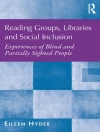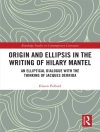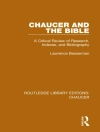This five-volume series, British Women’s Writing From Brontë to Bloomsbury, 1840–1940, historically contextualizes and traces developments in women’s fiction from 1840 to 1940. Critically assessing both canonical and lesser-known British women’s writing decade by decade, it redefines the landscape of women’s authorship across a century of dynamic social and cultural change. With each of its volumes devoted to two decades, the series is wide in scope but historically sharply defined.
Volume 3: 1880s and 1890s analyses confluences and developments in women’s writing across two fin-de-siècle decades. Its 16 original essays reconsider fiction by canonical and lesser-known women writers, redefining the landscape of female authorship during these decades. By exploring women’s fiction within the social and cultural contexts of the 1880s and 1890s, the collection distils in terms of women’s writing how these decades discretely build on earlier work that is identifiably Victorian. The last two decades of the century, in distinctive ways, witnessed literary experiment, reflection on the limits of realism, and a fruitful sense of confusion about what was ending and what was about to begin.
Inhaltsverzeichnis
Chapter 1: Introduction.- Part I: Women’s Writing of the 1880s.- Chapter 2: Edith Simcox on George Eliot: Transgendered Portraits in Episodes in the Lives of Men, Women, and Lovers.- Chapter 3: Domestic Metaphors and Scientific Illustration: Frances Power Cobbe and the Anti-Vivisection Movement in the 1880s.- Chapter 4: ‘A ghost indeed’: Spectralising the Female Householder in Margaret Oliphant’s 1880s Fiction.- Chapter 5: Between the Aesthete and the Shopworker: Mind And Labour In Vernon Lee And Amy Levy.- Chapter 6: Writing for the Masses: Ouida and Newspaper Syndication.- Chapter 7: Adopting the Next Generation: Parenting in Women’s Writing of the 1880s.- Chapter 8: Spelt from Sibyl’s Leaves: Anna Kingsford’s Dreams and Dream-Stories (1888).- Chapter 9: ‘We are one’: Fellowship Ideals and Social Transformation in Mona Caird’s The Wing of Azrael.- Part II: Women’s Writing of the 1890s.- Chapter 10: Notable or Invisible? Reassessing Women Writersof the 1890s.- Chapter 11: Exploring Women’s Possibilities at the Fin de Siècle: Sarah Grand’s Quest for Women’s Enlightenment.- Chapter 12: New Humour, New Dialogue: Ada Leversons Contributions to Punch and The Yellow Book.- Chapter 13: George Paston’s Fin-de-Siècle Feminism: Caught Between a Book and a Hard Place.- Chapter 14: ‘A good deal of risk…and a chance of danger’: Detection, Adventure, and Violence in Beatrice Heron-Maxwell’s The Adventures of a Lady Pearl-Broker.- Chapter 15: Woman Hate, Disgust, and National Happiness in the 1890s: Marie Corelli’s The Sorrows of Satan.- Chapter 16: ‘[S]uch a nasty, sneering book’: Class, Gender, and Ellen Thorneycroft Fowler’s Concerning Isabel Carnaby.- Chapter 17: Women’s Quest for Independence in the 1890s: Mary Cholmondeley’s Diana Tempest and Red Pottage.
Über den Autor
Adrienne E. Gavin is Emeritus Professor of English Literature and Co-founder and Honorary Director of the International Centre for Victorian Woman Writers (ICVWW), Canterbury Christ Church University, UK. She also teaches at Massey University, New Zealand.
Carolyn W. de la L. Oulton is Professor of Victorian Literature and Co-founder and Director of the International Centre for Victorian Women Writers (ICVWW) at Canterbury Christ Church University, UK.












